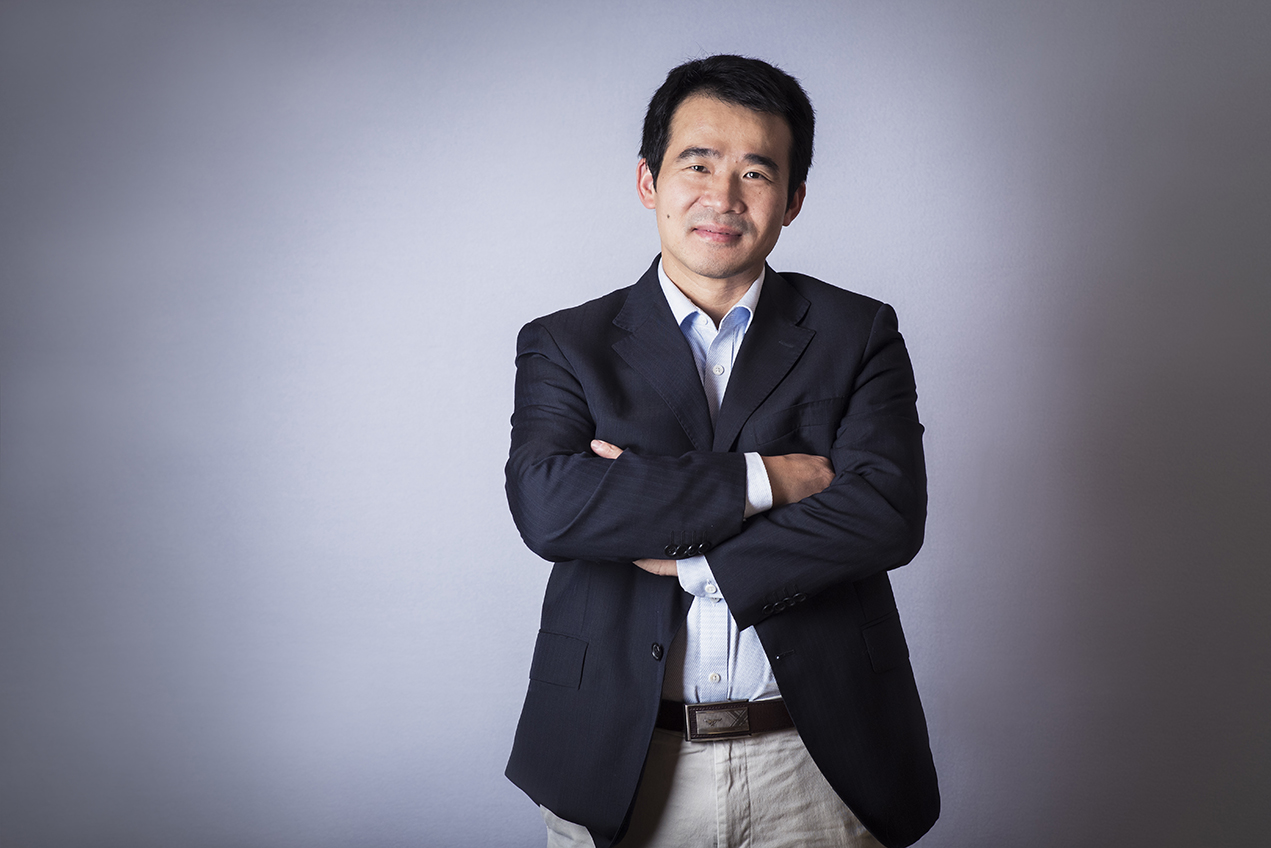Although USC scientist Jianfu (Jeff) Chen now studies human neurological disorders, he was originally more interested in organisms without brains, such as rice and wheat.
“When I was about to go to college in China, there was big emphasis on the biology major, because of the guy who happened to be a pioneer in the biotechnology to make transgenic crops. So that time, it was a very hot topic. That’s how I became attracted to biology,” said Chen, who is now an associate professor at the Center for Craniofacial Molecular Biology at the Herman Ostrow School of Dentistry of USC, and a principal investigator with USC Stem Cell.
After graduating from high school in a small town in Hubei Province in central China, Chen was accepted into the bachelor of science program in microbiology at China Agriculture University. He studied how bacteria and viruses invade their plant hosts, and how plants develop defense mechanisms to protect themselves.
Chen next moved to the United States to pursue a graduate degree in plant pathology at Kansas State University. When his mentor returned to China, Chen quickly completed his master of science degree in pathology at Kansas State University, and then transferred into a new laboratory at the University of North Carolina at Chapel Hill to continue working towards his PhD.
In the new laboratory, Chen found himself suddenly immersed in the animal kingdom. He refocused his research on tiny strands of genetic material called microRNA, and how they regulate the activity of genes in stem cells in heart and skeletal muscle.
For his postdoctoral training, Chen decided to diversify his experience into another area of interest: the human brain.
“The postdoc is an adventure: you don’t know what kind of laboratory, what kind of project you’re going to encounter,” he said. “So I went to University of Colorado, Denver, to Dr. Lee Niswander’s laboratory for a postdoc interview. I had lunch at Subway that day, and somehow, I lost my wedding ring. So both myself and my mentor actually went back to check everywhere in the Subway — including the trashcan — but we could not find it. So in the end, I just stayed there, hoping I would find my ring.”
Even though he never did find his wedding ring, he did discover his passion for studying the role of neural progenitor cells in the development of human birth defects.
“If the disruption of neural progenitor cells happens at an early stage, it leads to a neural tube defect,” Chen said. “But if it happens at a relatively late stage, it leads to the microcephaly, which is a smaller brain.”
As a postdoctoral trainee, Chen created a lab mouse with a mutation in a gene called WDR62, commonly found in human patients with microcephaly. Chen demonstrated that this gene mutation impairs the ability of neural stem cells to divide, leading many of these cells to die and resulting in microcephaly.
In 2014, Chen accepted a position as an assistant professor at the University of Georgia, and established that Zika infection during pregnancy can cause microcephaly and other injuries in developing fetuses.
Three years later, he became a faculty member at the Herman Ostrow School of Dentistry of USC.
“I was looking for a better research environment to grow,” he said. “And here, the craniofacial research is quite strong, and also stem cell research and neuroscience are quite strong. That’s the major reason I moved here.”
At USC, he has already made several exciting discoveries. In 2017, he published a paper in the journal Development, demonstrating that the African strain of the Zika virus causes more damage than the Asian strain in mice. In a 2019 paper in Nature Communications, he used brain organoids — rudimentary brain-like structures grown from human stem cells in a laboratory — to study how the mutation in the gene WDR62 contributes to microcephaly. And for a 2020 paper in Genes and Development, Chen’s team used brain organoids and lab mice, and demonstrated how a mutation in another gene, RAB39b, contributes to macrocephaly and autism spectrum disorder.
In addition to studying neurodevelopmental disorders, his lab also studies neurodegenerative diseases, including ALS and frontotemporal dementia, that affect patients later in life.
He’s also interested in dental and bone defects that are linked to neurological disorders, such as the premature fusion of sections of the skull that limits brain growth in babies with craniosynostosis. A collaborative study from the USC laboratories of Yang Chai and Chen developed a novel approach, using stem cells and biomaterials, that mitigated both skull and brain defects in animal models of craniosynostosis, recently published in Cell.
“I was a little bit surprised to be hired by a dental school, actually,” Chen said. “But when I interviewed here, the center faculty liked my research, and I also enjoy my interaction with them. Nowadays, there’s a lot of crosstalk and interaction between craniofacial and neurological researchers.”
— Cristy Lytal


